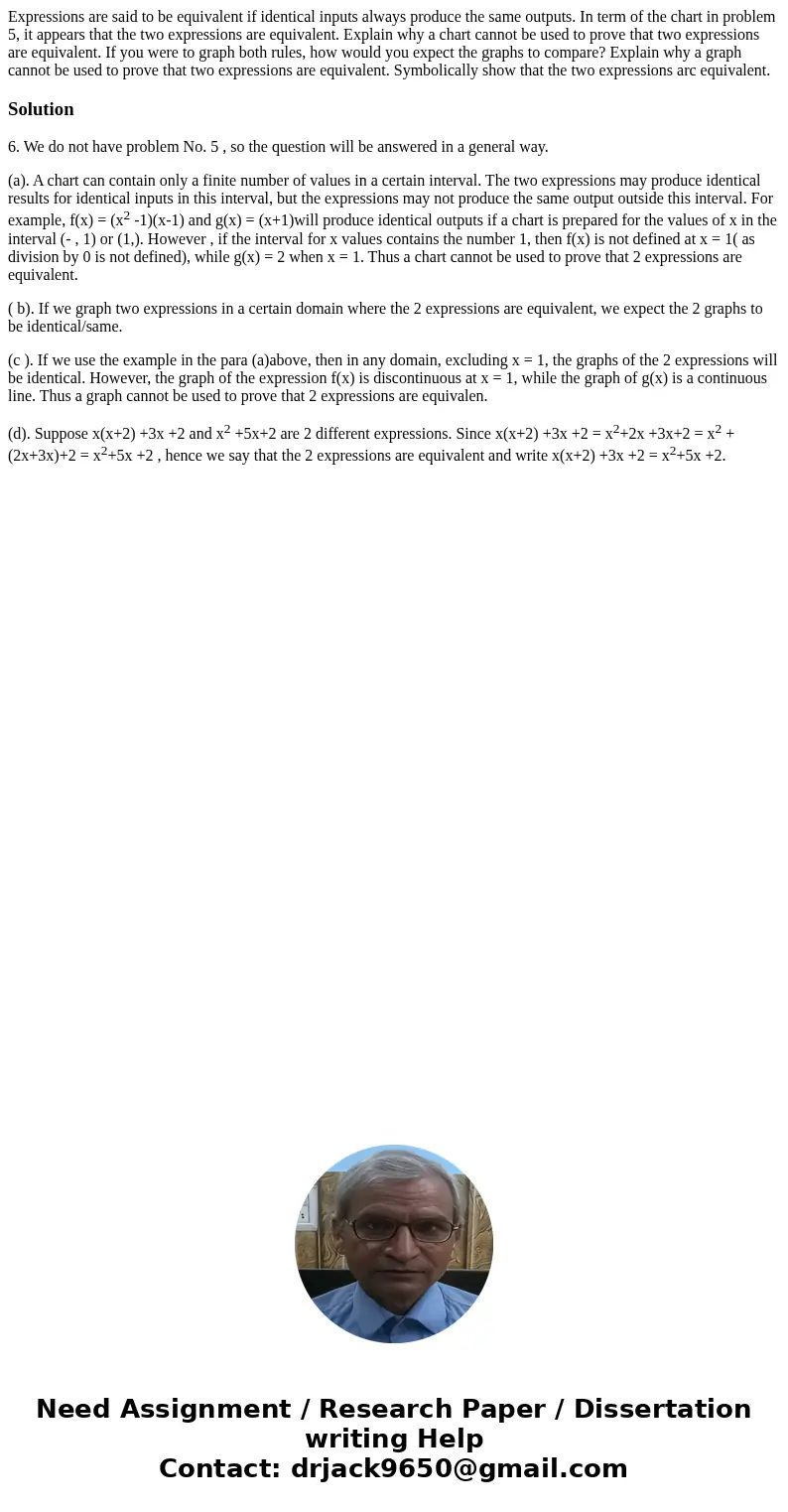Expressions are said to be equivalent if identical inputs al
Solution
6. We do not have problem No. 5 , so the question will be answered in a general way.
(a). A chart can contain only a finite number of values in a certain interval. The two expressions may produce identical results for identical inputs in this interval, but the expressions may not produce the same output outside this interval. For example, f(x) = (x2 -1)(x-1) and g(x) = (x+1)will produce identical outputs if a chart is prepared for the values of x in the interval (- , 1) or (1,). However , if the interval for x values contains the number 1, then f(x) is not defined at x = 1( as division by 0 is not defined), while g(x) = 2 when x = 1. Thus a chart cannot be used to prove that 2 expressions are equivalent.
( b). If we graph two expressions in a certain domain where the 2 expressions are equivalent, we expect the 2 graphs to be identical/same.
(c ). If we use the example in the para (a)above, then in any domain, excluding x = 1, the graphs of the 2 expressions will be identical. However, the graph of the expression f(x) is discontinuous at x = 1, while the graph of g(x) is a continuous line. Thus a graph cannot be used to prove that 2 expressions are equivalen.
(d). Suppose x(x+2) +3x +2 and x2 +5x+2 are 2 different expressions. Since x(x+2) +3x +2 = x2+2x +3x+2 = x2 +(2x+3x)+2 = x2+5x +2 , hence we say that the 2 expressions are equivalent and write x(x+2) +3x +2 = x2+5x +2.

 Homework Sourse
Homework Sourse